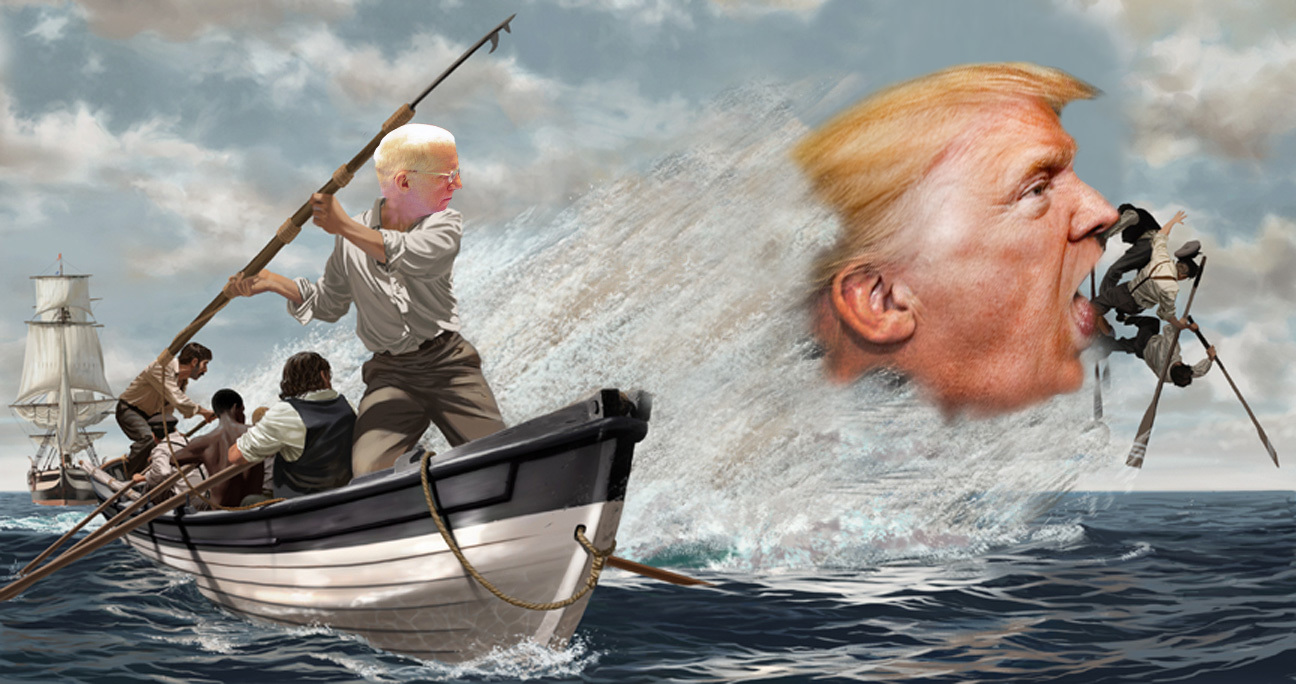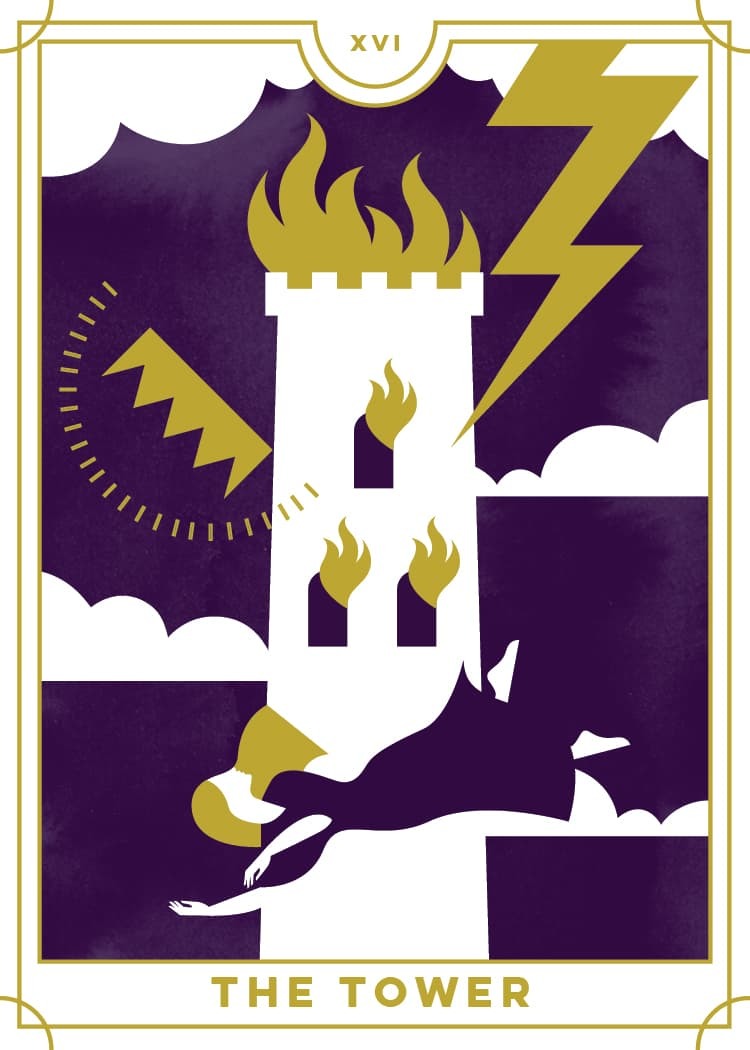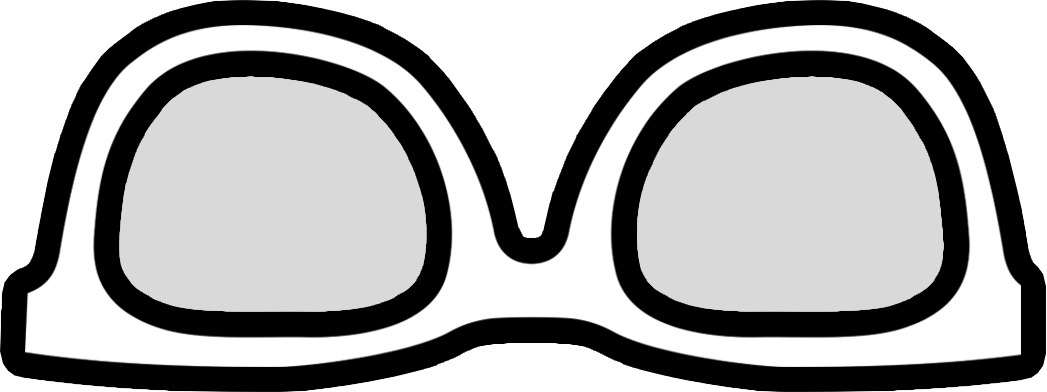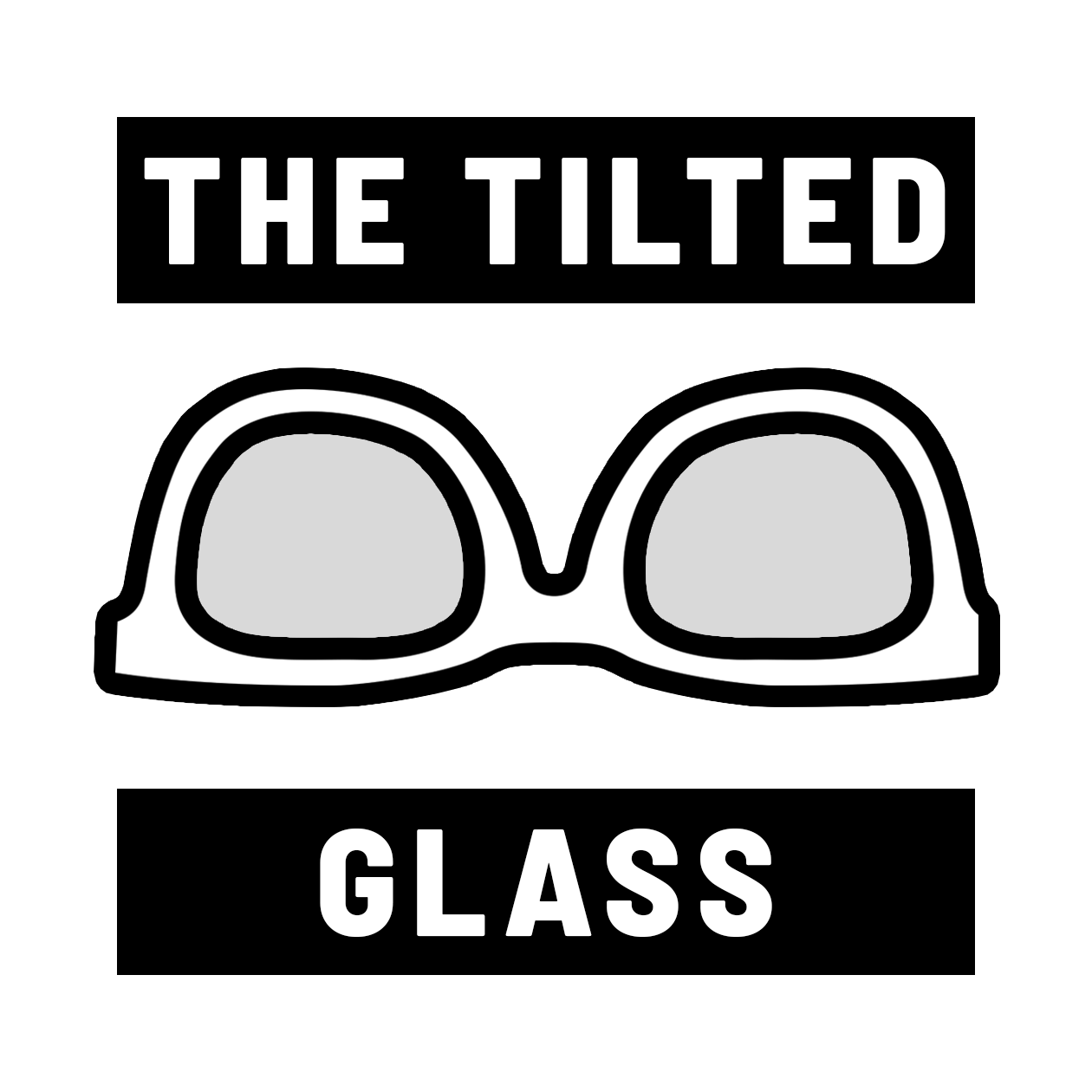Grab Them By The Tower: We Interview The Old Professor On A Rare Protest
Nov 09, 2018
Rapunzel let down your wig.
Do you know about the Man at Trump Tower?
His name is not Don Quixote. Nor is it Frodo Baggins. Nor is it Sisyphus nor Achilles. Although you may be inclined to think so.
He is Dr. Tom LeClair. A retired Professor Emeritus of literature from the University of Cincinnati. He is the author of seven novels, three books of literary criticism, and a reviewer whose work has been featured in The New York Times Book Review, The Washington Post Book World, The Nation, The Barnes & Noble Review, The Daily Beast, and countless others. Most recently, he has published Harpooning Donald Trump, the first substantial literary response to President Trump.
Dr. Tom LeClair has been protesting outside Trump Tower ever since Trump won the election.
We here at The Tilted Glass had the opportunity to interview Dr. LeClair and learn a bit more about his “art of rage.”
What are you doing outside of Trump Tower? How long have you been there?
Just a few days after the election I went to the Tower and joined some nurses walking around in circles in a “protesters pen” a block away. They were chanting slogans and, for some reason, perhaps because I’m a writer, I didn’t feel comfortable with the chants or the location. So the next day, I wrote a sign on cardboard—RAGE TRUMPS HATE—and stood by myself where passersby could take photos and circulate them on social media. And where I got some attention from the media scrum that was always around the Tower those first weeks. I spent six or seven hours a day there, every day of the week for about six weeks. Then I went home and wrote about my experience in Harpooning Donald Trump. Since that first obsessional binge, I’ve been going back—with a lot of different signs—a couple days a week.
RAGE TRUMPS HATE is not your usual politically correct message. What drove you there?
My sign was an alternative to the LOVE TRUMPS HATE I saw at demonstrations. Your verb “drove” is correct. A life-long liberal, I was driven by the rage on my first sign. A retired university professor, I was particularly enraged by Trump’s fraudulent university. And as a novelist frequently concerned with environmental subjects, I was enraged by Trump’s “policies” and early cabinet appointments. I was unable to write anything but signs. I was unable to do anything else, so I guess I was like Ahab, crazed by the insult this orange whale of a man had perpetrated on America. Nothing Trump has done since his election has diminished my rage, but I control it with occasional visits and with continued writing about and talking about Trump. As I write these lines, I’m in Seoul where a university has invited me to lecture about “Rocket Man” Trump and American Literature.
What kinds of reactions do you get at the Tower?
This Fall, a 40ish woman, trailed by what I assumed was her husband, came up to me and said, “I fell in love with you a year ago.” I asked her if her husband was OK with this. She laughed and pulled out her cell phone with a photo of me in my winter garb. She said, “I look at this photo often; it keeps me sane.” That was the reaction I was after with my usually lonely vigil: not love but a sense that my very modest example of resistance to demagoguery could somehow help sustain individual resistance. The more common reaction is, “What the hell do you think you’re doing here?” Or from the few Trumpsters in Manhattan, “Why don’t you get a job.” I tell them I’m doing my job, protecting free speech, encouraging others to not give in to the daily degradation of the Trump presidency. About ninety percent of reactions are positive. Those tough Trump supporters almost never engage directly but throw insults over their shoulders after they have walked past.
Does it ever get physical?
I had my sign ripped out of my hands once. Lately a Trump fanatic has shown up with flags and banners, and we had to be separated a couple of times. Rumor is that he got a front tooth knocked out by someone. The threat of violence on the street can be useful, though. After a family of Spanish speakers had their photo taken with me, a passerby said to them, “Why don’t you go back where you came from?” He was twenty feet beyond me when I understood the situation. I started after him spewing obscenities. He picked up the pace. This is New York, right? This old man with the sign may be crazy. I picked up the pace. He walked faster. I wasn’t going to assault him, but I don’t think he will be so quick to harass non-English speakers in the future.
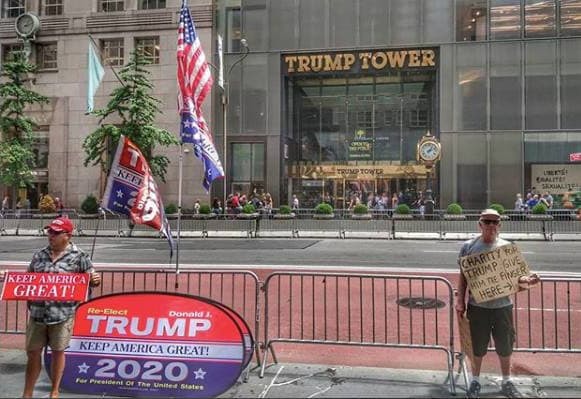
What has most surprised you about your experience at the Tower?
How many people walk by without even glancing at my signs. Maybe that’s just personal because I read everything that comes my way. But the general lack of attention has driven me to devise ways of capturing interest. Wit helps. But what gets the most photos is a sign along the following lines: CHARITY FOR TRUMP, GIVE HIM THE FINGER HERE ( ). I stick my middle finger through the hole in the sign, and quite a few people each day stop and have their photo taken with me—with their finger protruding from the sign. Since a Trump supporter showed up a couple of months ago with flags and banners, I’ve invested in a prop: a large banner (free from some Republican organization) that I tape to the sidewalk. I stand on the banner and display a sign that solicits pedestrians to STOP TRUMP, STOMP TRUMP. People enjoy dancing on that banner. I would like to display more provocative signs, such as DONALD, REMEMBER HUEY LONG AND GEORGE WALLACE, but I got a visit on the sidewalk from two Secret Service agents a while back so I’m careful. But sometimes I do whisper in the ears of persons being photographed with me: NEXT BIG BROADWAY HIT AFTER HAMILTON: JOHN WILKES BOOTH. A sign few passersby understood was: WHO WILL GO UPRIVER FOR PRESIDENT KURTZ? So I wrote an essay on Trump, “Heart of Darkness,” and Apocalypse Now that I delivered at San Diego State University and that I posted on Medium.
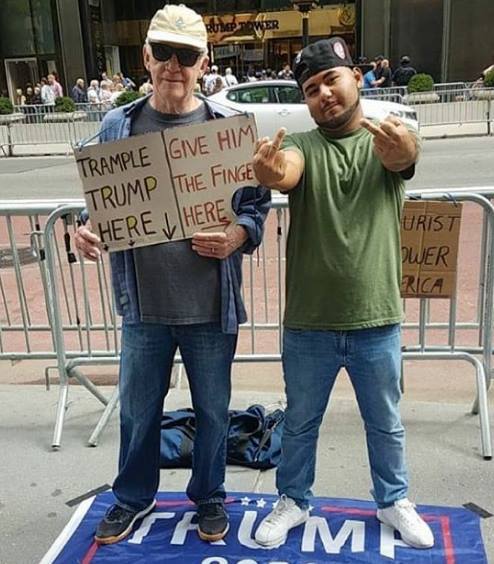
You’re widely respected amongst the giants of literary criticism, having begun some years ago by publishing In the Loop: Don DeLillo and the Systems Novel. What novel or tropes from literature most closely resemble You and the Tower?
I have two legs to stand on, so I’m not really Ahab. The story I like best is told about Emerson’s visit to bail Thoreau out of jail when he refused to pay his tax that supported the Mexican War. Emerson supposedly said, “Why, Henry, what are you doing in there?” And Thoreau replied, “Why, Ralph, what are you doing out there?” Every once in a while some protester will show up for a couple of hours, and guys selling anti-Trump buttons are usually “in there,” but I suppose I like to think of myself as those heroic literary renegades of my youthful reading—the Yossarian of Catch 22 and the McMurphy of One Flew Over the Cuckoo’s Nest. And I’m always inspired, whether conscious or not, by some of the final words of Gravity’s Rainbow: “Bring the Towers low.” Speaking of towers, many of the pedestrians on Fifth Avenue are tourists, so I sometimes carry a sign that says: DEAR TOURISTS, TRUMP TOWER IS NOT AMERICA. IT’S BABEL. The non-native speakers of English are a problem for the writer of literary signs, so I must take care not to be too allusive or subtle. But, as a writer, I need to have a sign I can stand behind—literally and figuratively.
Do you have an end goal?
As with the writing of literary fiction, there’s a high degree of futility in writing protest signs. One exception: in the early days, Japanese TV interviewed me twice, the second time displaying copies of a couple of my novels, which I assume they purchased. Like the futile characters in Beckett’s End Game, I go on, I go on. What I’m waiting for is what’s called an “own goal” in soccer, a miscue by the defending team--by the Trump team that will result in his resignation. Perhaps that own goal has already been committed, and we will learn about if from Robert Mueller or from the new Democrat-controlled House of Representatives. I would like to stop watching MSNBC, stop reading about the corruption around and through the Trump reign, stop writing about this fool.
What is “Donald Trump?” What will it take to stop both Donald Trump and also the conditions that could create the next Donald Trump?
Wow, the size of these questions allows me to say, “I try to answer these in Harpooning Donald Trump, available from the owner of the Washington Post (which is to say, without using the word, Amazon).” In the book, I argue that Trump is essentially pre-literate, a non-reader who resembles the warriors of pre-literate epics such as The Iliad. Before writing, people did not think, at least not in the ways that literacy introduced. Trump doesn’t read, and he doesn’t think, not objectively and dispassionately. Like figures in the Greek epics, he is obsessed with personal honor and loyalty. Probably only a heart attack or stroke from all his rage will stop him. Literature won’t affect him, but in my dotage I still believe certain novels can affect culture and readers. For example, Robert Coover in The Public Burning, published almost 50 years ago, presents a Trump figure in the book’s Uncle Sam, a figure that connects the Trump fraudster to all of American literature. Anyone who had read Coover’s novel would have seen through the myth-mongering of Trump. Harpooning Donald Trump is a hybrid work--part journalism about my experiences at Trump Tower; part literary discussion of books that illuminate Trump and his America; and part encouragement of politically engaged novels of the future by younger writers such as Richard Powers, William Vollmann, Joshua Cohen, Tom McCarthy, and others. Like Coover, these younger novelists (well, younger than me) understand and articulate the systems of American culture—the deep strata and fault lines of our national life. I recognize the irony of believing that fake books (that is, fictions) can combat fake news (that is, the lies of Trump and his strumpets), but the best, most ambitious fiction—such as Moby-Dick and Gravity’s Rainbow—can have large intellectual and emotional effects. Trump lacks the former, is all the latter. It’s my belief that non-readers elected him, and only readers can prevent his kind of demagoguery in the future. READERS VERSUS LEADERS. Not a sign but a belief. Or as the final words of Harpooning have it: IMAGINATION TRUMPS HATE.
I hear you are a bit of a champion table tennis player. What’s your story on that? If you challenged Trump to a game of table tennis, what would the stakes be? It might not be so easy. Somewhere Trump must have tweeted that “I’m the best ping pong player ever. Nobody is better than me. I’m the ping of pong.”
Not a champion but an emeritus. When I worked at Susan Sarandon’s ping pong club, SPiN, in New York, the manager had me wear a bow tie, suspenders, and baggy pants. I was “Professor Ping Pong.” It occurs to me now that I’m Professor Protester. Woody Harrelson showed up at SPiN one day, and didn’t win a game. So here is the way to get rid of Donald: arrange a match with these stakes—my life against his. I’m confident, but I’d want to make sure someone else was keeping score.
About Professor Protester
Tom LeClair is a Professor Emeritus at the University of Cincinnati. He is the author of seven novels, three books of literary criticism, and hundreds of essays and reviews in nationally circulated periodicals. You can see some of his signs on his Facebook account and read more about him at TomLeClair.com. He can be reached, when he’s not at Trump Tower, at [email protected].
Please send him words of encouragement and buy his book!
